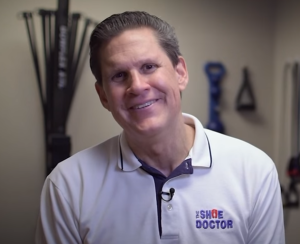With so many of the orthotics and foot health treatments available on the market today, it can be hard to distinguish which is right for your needs. Supination and its associated treatment options are particularly confusing because they’re often confused with pronation, a different medical term that covers different issues entirely. Knowing the particulars about supination could help you make better decisions when selecting an orthotic or related product to support your feet — not just now but far into the future. This blog post will dive deep into what supination is, what orthotics may be best suited for it, and how to maximize their effectiveness. Read on if you want to learn more!
What Is Supination?
Supination is the term used to describe the outward rotation of the foot and ankle. This motion is what allows us to walk and run on our feet. Supination occurs when the foot and ankle are in a neutral position, with the weight being evenly distributed between the heel and ball of the foot. When we supinate, the ankle bone (talus) rotates so that it points outward, and the arch of the foot flattens. This motion brings us into a stable position for walking or running.
The muscles that control supination are located in the lower leg and foot. These muscles include the tibialis anterior, peroneus tertius, and extensor digitorum longus. The tibialis anterior is responsible for lifting the front of the foot, while the peroneus tertius helps to lift the outside of the foot. The extensor digitorum longus extends all four toes. These muscles work together to create a stable platform for pushing off during locomotion.
Supination is an important part of everyday life, but it can also be a source of injury. When supination is excessive, it can lead to problems such as ankle sprains, Achilles tendonitis, and plantar fasciitis. These injuries can occur when the ankle is put into an overly rotated position, causing excessive stress on the ligaments and muscles around it.
If you are experiencing pain or discomfort in your ankle or foot, it is important to seek medical attention. A trained professional can help you diagnose the cause of your pain and provide treatment options to help you get back to your usual activities.
The Difference Between Supination And Pronation
One of the most important things that people need to understand about their bodies is the difference between supination and pronation. Many people use these terms interchangeably, but they actually refer to two very different motions that our feet can make. Supination is the motion of turning the foot out so that the heel and toes are pointed away from each other. Pronation is the motion of turning the foot in so that the heel and toes are pointed towards each other.
Understanding these motions is important because they can affect how we move and how our bodies function. For example, if you pronate your foot when you walk, it can cause your ankle to twist inward which can lead to ankle pain or injuries. Conversely, if you supinate your foot when you walk, it can cause your ankle to twist outward which can also lead to ankle pain or injuries.
So why do some people pronate and supinate their feet? Well, there can be a number of reasons. Sometimes it’s simply due to the way our bones are shaped or the way our muscles are built. But it can also be because of the types of shoes we wear or how we walk. For example, if you wear shoes with a lot of cushioning or support, it might cause you to pronate more than usual. Or if you walk with a heavy gait, it might cause you to supinate more than usual.
Fortunately, there are a number of ways that we can address supination and pronation. If you pronate your foot, for example, you might need to wear shoes with less cushioning or no support at all. You might also need to do some exercises to strengthen your ankle muscles. If you supinate your foot, on the other hand, you might need to wear shoes with more cushioning or support. You might also need to do some exercises to stretch your ankle muscles.
Orthotics For Supination
Orthotics for supination are devices that are worn to correct foot alignment and position. They are used to prevent or correct over-supination, which is a condition that results in the excessive outward rolling of the foot. Orthotics for supination can be custom-made or purchased over the counter. Generally, they are made from a hard plastic or metal shell that is fitted to the inside of the shoe. They may also include a cushioning layer to provide comfort and shock absorption.
Orthotics for supination can be helpful for people who have difficulty walking or running due to foot alignment issues. They can also help to prevent injuries caused by over-supination, such as ankle sprains and stress fractures. Orthotics for supination are available in a wide variety of styles and colors, so you can find one that will fit your needs and preferences.
Maximizing The Effectiveness Of Orthotics For Supination
Supination is a common injury that can occur in many different sports. It is caused by the foot rolling too far inward and can result in pain, inflammation, and even micro-tears in the ligaments that support the ankle. While there are many treatment options available for supination, one of the most effective is the use of orthotics. Orthotics are custom-made shoe inserts that help to correct the alignment of the foot and ankle, and they can be very effective in reducing pain and restoring function.
There are a few things to keep in mind when using orthotics for supination. First, it is important to get a proper fit. Orthotics should be snugly fitted to the bottom of your foot and should not move around when you walk. They should also be comfortable to wear, so you will be more likely to use them regularly. Second, it is important to wear your orthotics every day. Supination can be a chronic condition, so it is important to wear your orthotics every day to help correct the alignment of your foot and prevent further injury.
If you are suffering from supination, orthotics may be the right treatment option for you. Talk to your doctor or physical therapist about whether orthotics might be right for you, and be sure to follow their instructions for proper use. With regular use, orthotics can help reduce pain and inflammation and restore function to your ankle.
Now that you know a little more about supination, Orthotics for Supination, and how to maximize their effectiveness, put this knowledge into practice. If you have any problems or questions along the way, don’t hesitate to contact us. We’re always happy to help in any way we can!
Remember, The 3 Arches Of Your Feet Still Need Support!
Maybe you have already felt the first symptoms of balance disorders, or you want to prevent them from appearing in the first place. Consider getting a foot orthotic device or simply taking care of your feet. Start by washing them thoroughly with a gentle soap when you shower. Being a complex support system, your feet are your first line of defense against balance-related issues, since their arches provide you with the stability you need in your daily life. It’s time to put your foot down and push back against balance issues. With both feet on the ground, dedicate yourself to keeping them comfortable and healthy. Give us a call, and we will scan your feet to make you custom orthotic inserts.
The Shoe Doctor has specialized in providing custom orthotics for 20 years. The right orthotic insoles can greatly reduce foot, knee and hip pain while increasing performance and comfort. Russell at The Shoe Doctor will help educate and assist you in finding the perfect solution for your particular situation. We will create a 3D map of your feet and make custom orthotics for your hiking boots, everyday shoes, and everything else in between. These orthotics, along with our expert advice, will get you using orthotics like a pro, and have you performing at the peak of your abilities in no time! If you are in the San Francisco Bay Area, give The Shoe Doctor a call to get the best custom orthotics in the area! We are here to assist you, schedule your free consultation here!
Disclaimer: The materials available on this website are for informational and entertainment purposes only and not for the purpose of providing medical advice. You should contact your doctor to obtain advice with respect to any particular issue or problem. You should not act or refrain from acting based on any content included in this site without seeking medical or other professional advice. The information presented on this website may not reflect the most current medical developments. No action should be taken in reliance on the information contained on this website and we disclaim all liability in respect to actions taken or not taken based on any or all of the contents of this site to the fullest extent permitted by law.


